
Remembering the Past, Weaving the Future

MODULE 1- ARTISTRY AND CRAFT
LAND 7010- FALL2024
WOVEN REMEMBRANCE
“We cannot change the past, but we can learn from it and strive to create a better future.”
- Elie Wiesel
Inspiration Design Option Final Design Components of Design Quilting Process Final Quilt INDEX
COMMUNITY PEOPLE EXPERIMENT HEALING HOPE
STORY
Imagine the quiet hum of sewing machines, each stitch echoing the passage of time. This quilt isn’t simply a collection of colorful fabric; it’s a window into the past, a portal to understanding the Cincinnati Radiation Experiment’s impact. More than a historical record, it’s a heartfelt expression of empathy. Each quilter, their needle a conduit of emotion, pours their compassion into the fabric, offering comfort to families and communities still grappling with loss. This isn’t just a quilt; it’s a tangible symbol of remembrance, a testament to the human spirit’s ability to heal through shared experience and a comfort to all the families of the victims.
INSPIRATION
The pixelated effect in the quilt evokes a sense of structure and order which resembles with my idea of community in the story. The Radiating circles in the art communicates the effect of the experiment on the Community.

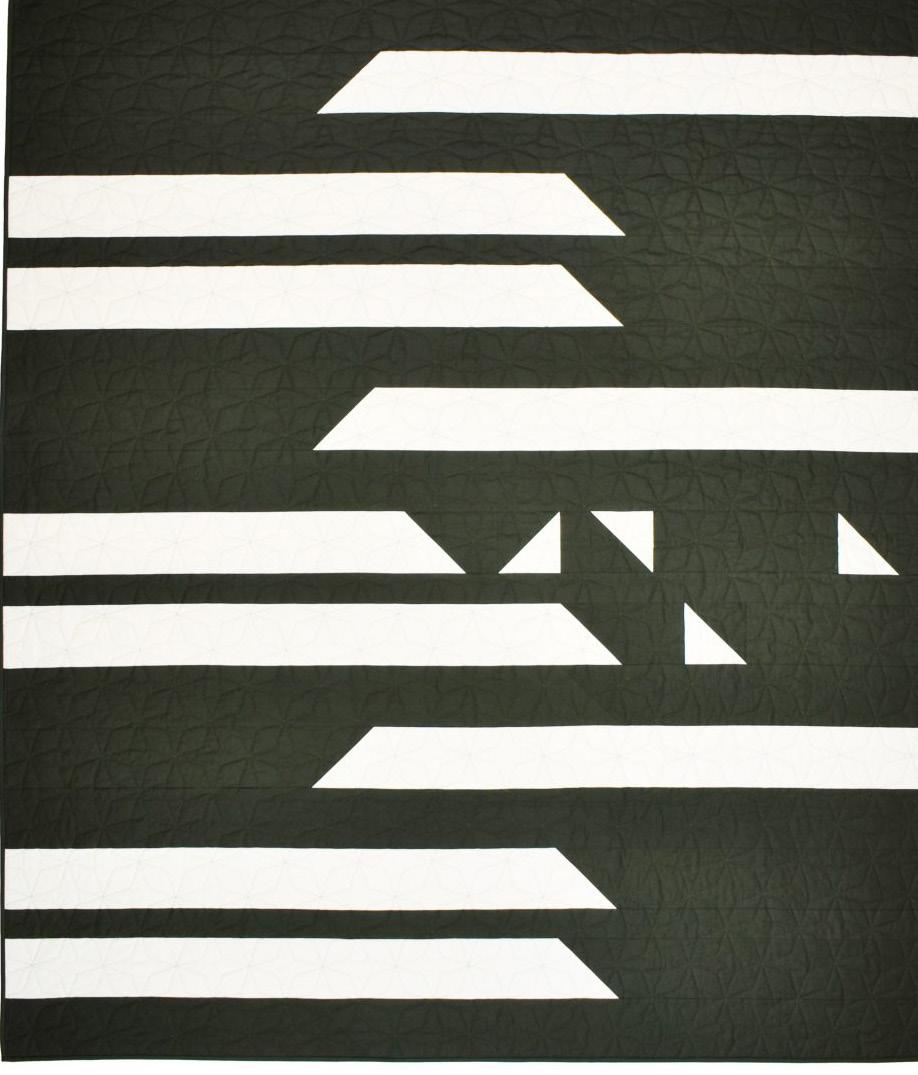

DESIGN OPTION
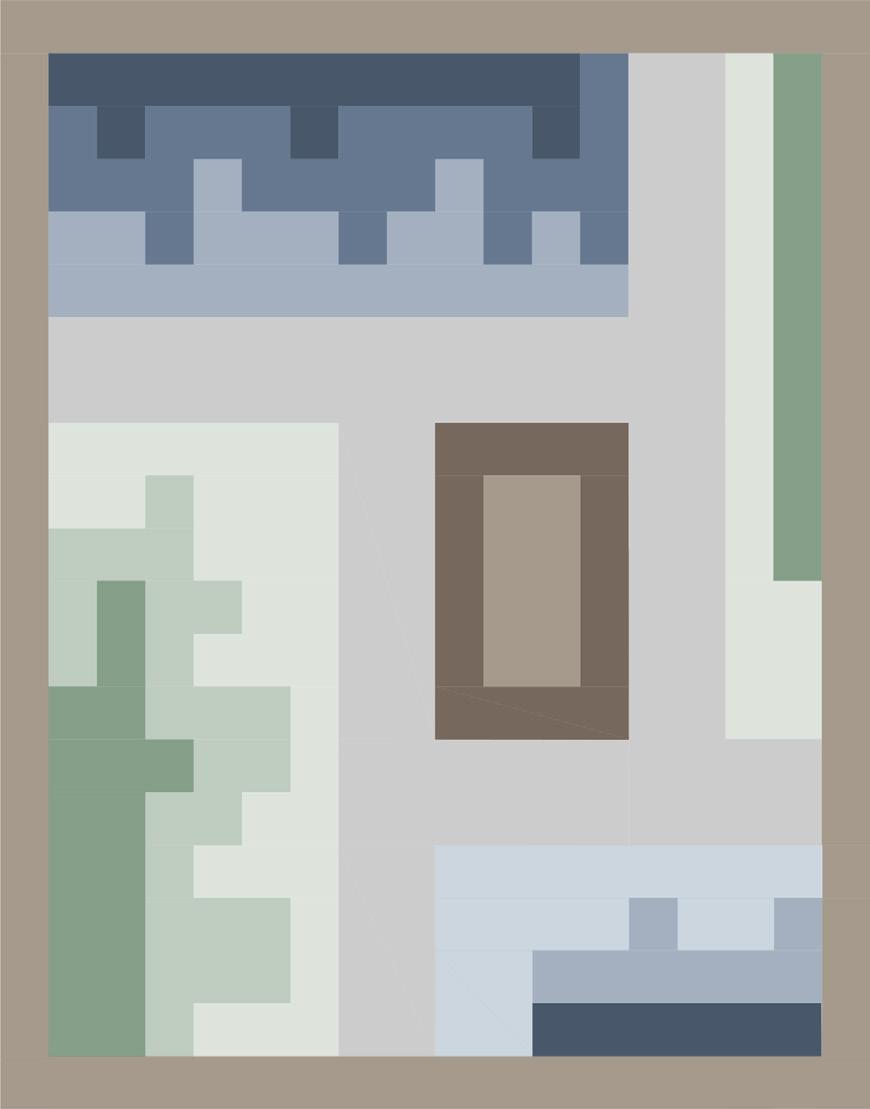
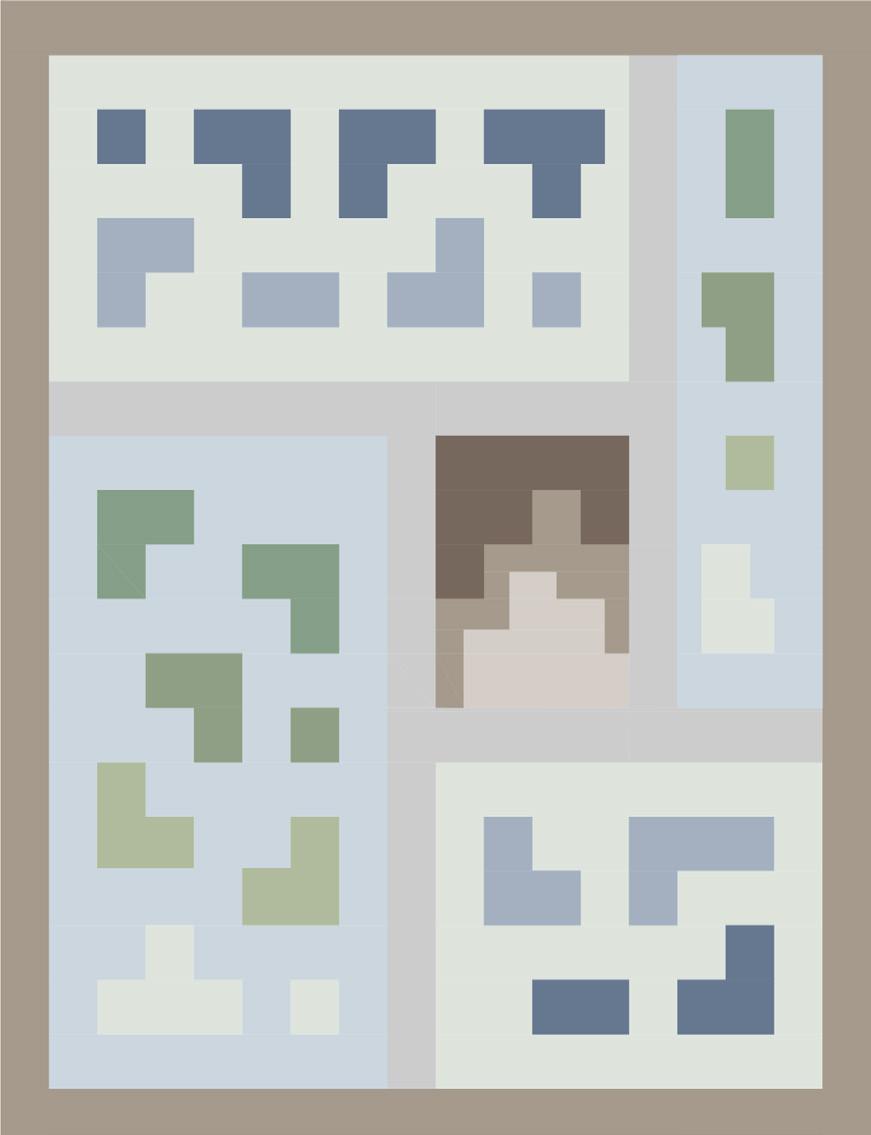
The Exercise further explored the layout to create a symmetry and balance in the composition. The earth color palette is intended to evoke a sense of history and nature. The shades of green and the blue is to gives a soothing effect to the observer and express a symbol of calmness
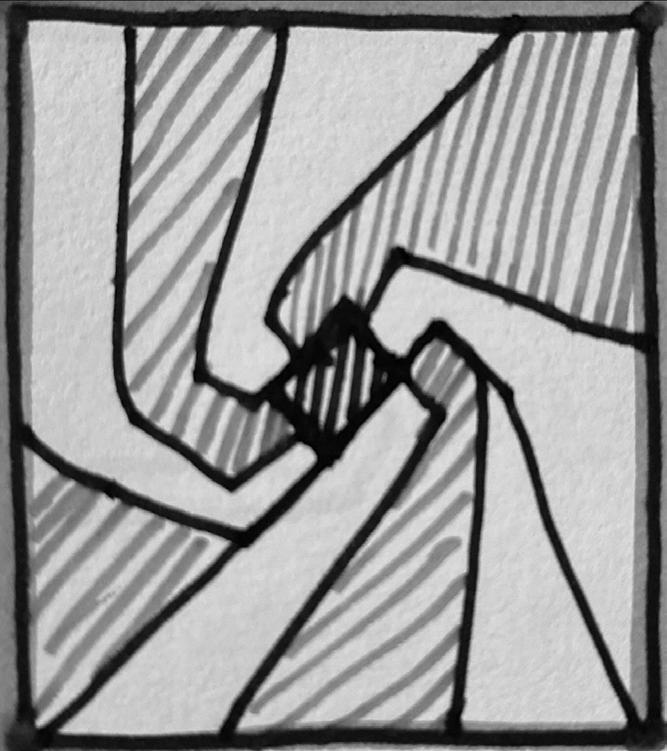
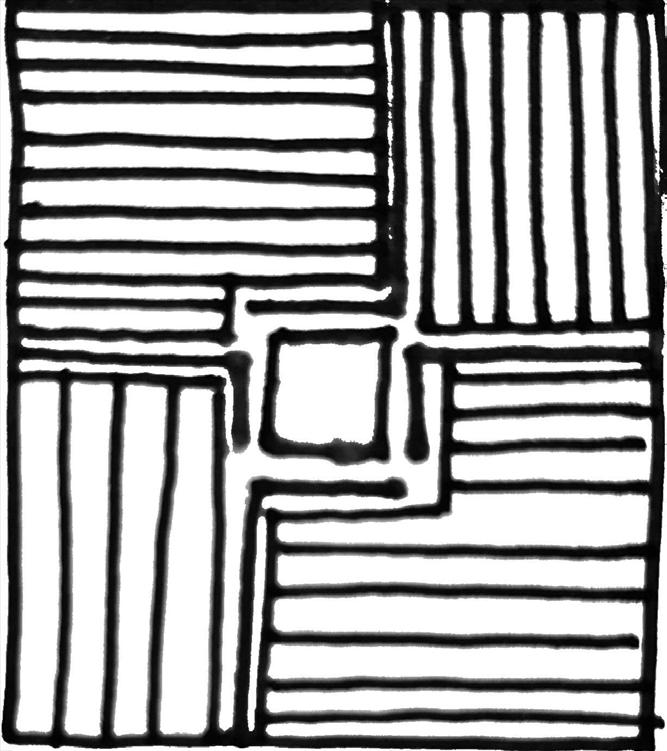
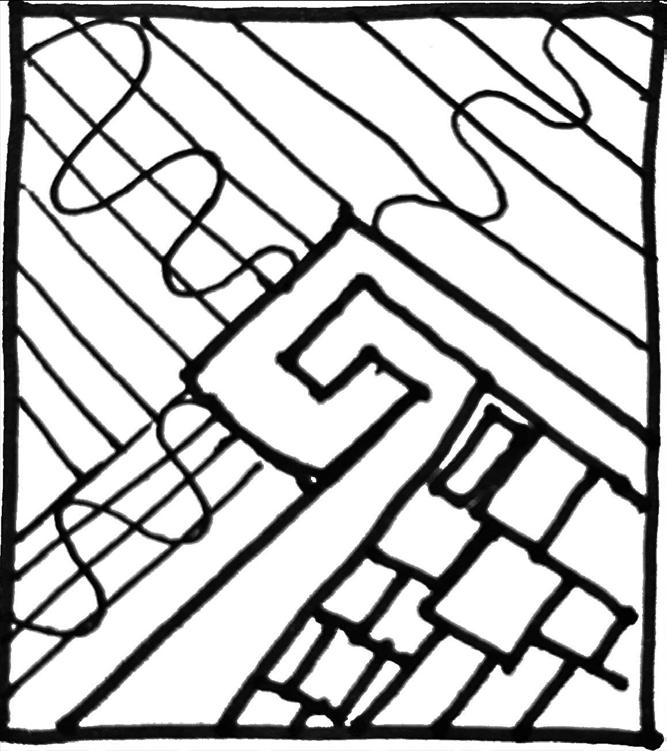
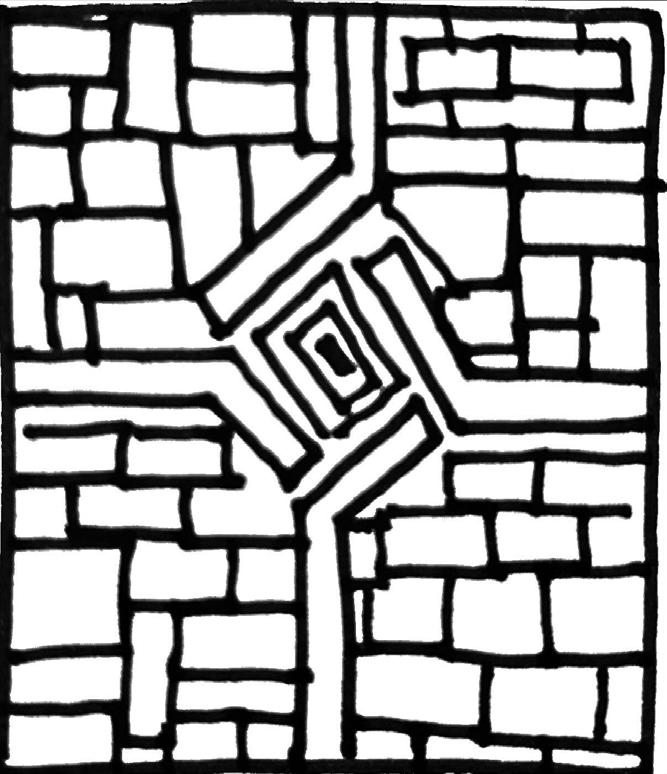
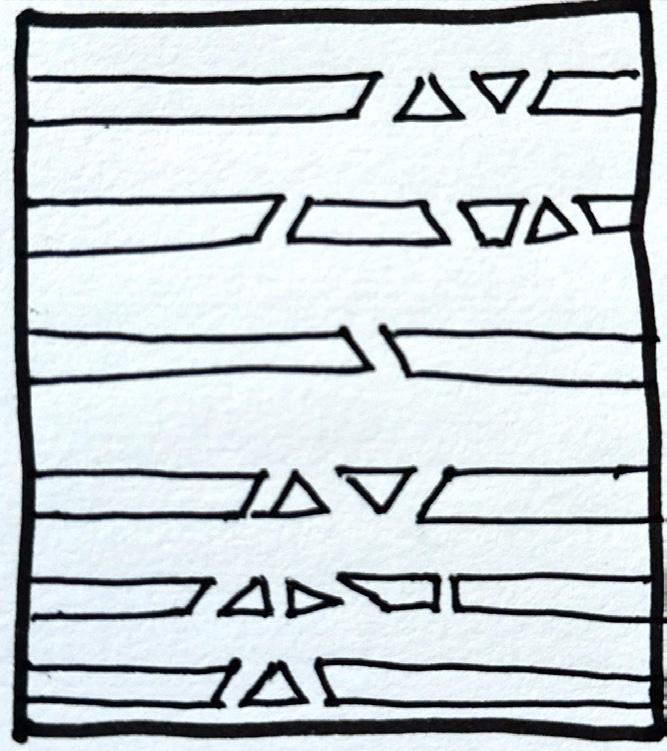
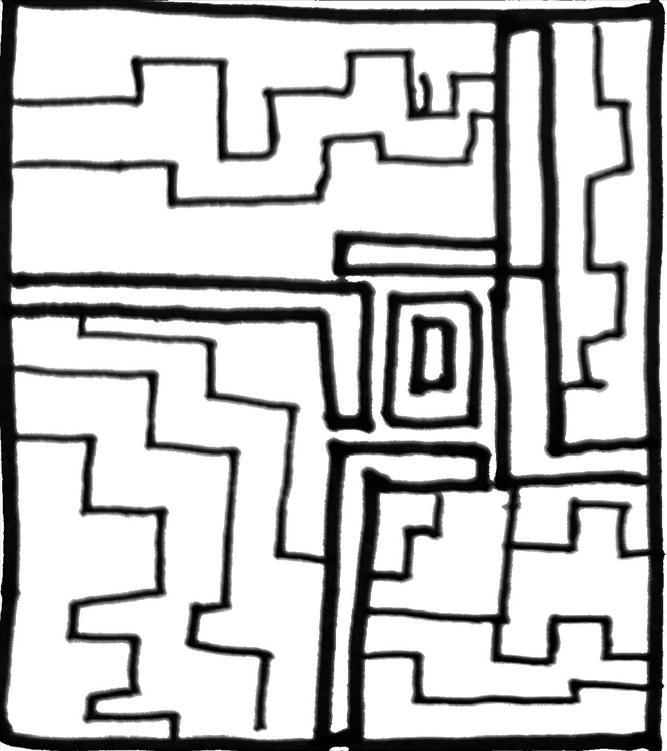
The Sketches explore different patterns to create an abstraction of the narrative to signify the community, the Experiment, the Impact and the Hope to look forward for the future.
FINAL DESIGN
The design of the quilt is structured in such a way as to showcase the different components of The Cincinnati Radiation Experiment. The major design components of the quilt that depict the entire journey of the experiment are as follows
Community by Green patches and Blue patches
Lack of Consent by Gray patches
The Radiation by Yellow quilt stitches
The Hope by Red patches
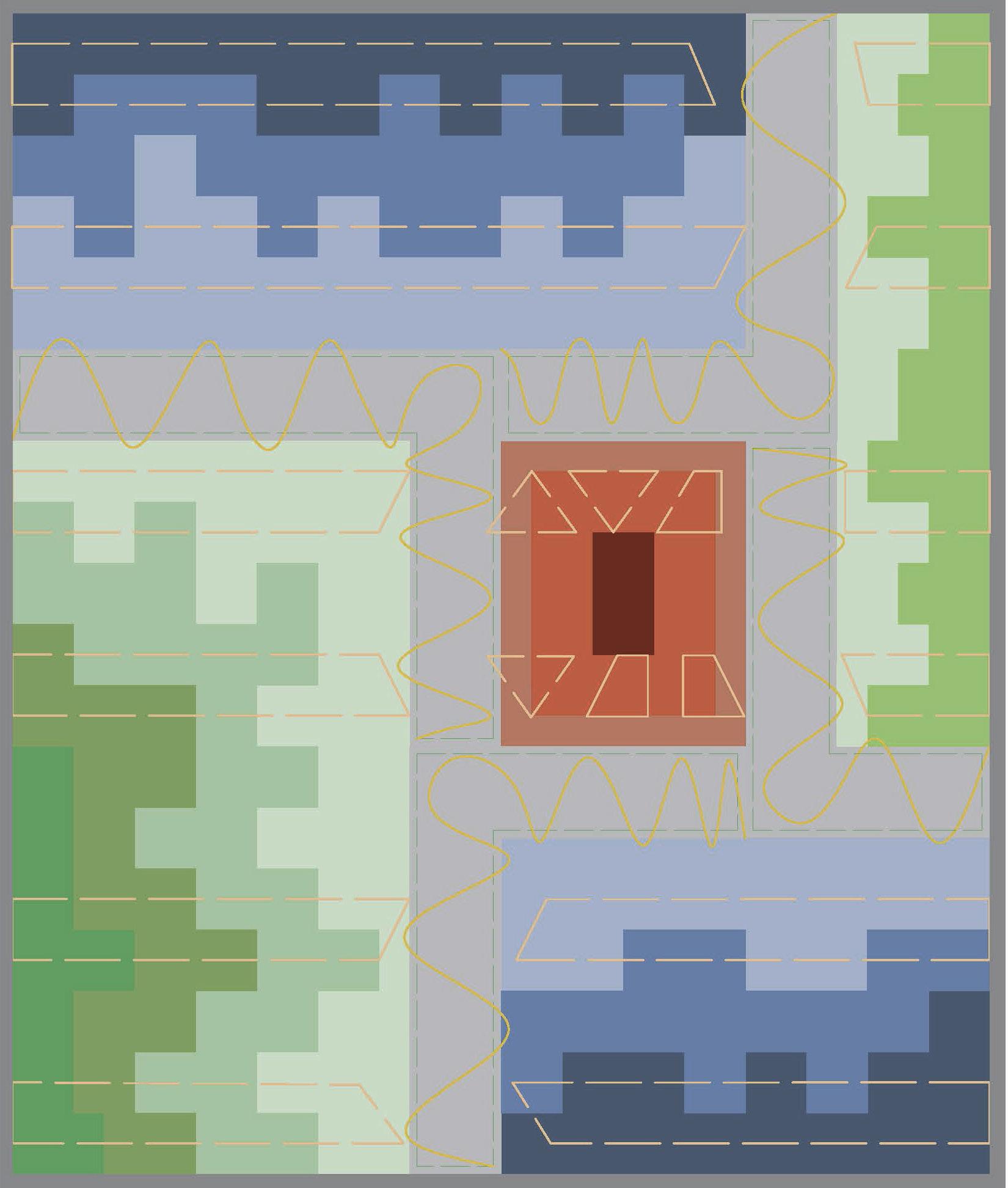
Quilt-30” X 36”
COMPONENTS
Community :
The 120 patches in the quilt represent the 120 people predominantly of African-American race of different ages and sex.
Lack of Consent :
The gray patch signifies the lack of information, lack of consent and the false promises made to the patients by the researchers for personal greeds.
The Radiation :
The stark contrast of the yellow color and handstitched wave pattern signifies the intensity of the radiation the patients were exposed to. The patients were exposed to over 20,000 X-rays at once.
The Hope :
The center red patches serve as a dark reminder of the far-reaching impacts this experiment had and the hope that sparked after the investigations and amendments made in the later year.

PROCESS
Bulding the Quilt involves a number of steps and challenges.
The quilting process started from the selection of fabrics with in the color palette and later cutting them into the required sizes.
Once the pieces are stitched together , they are layered with the batting, interface and the backing.
The fine intricate hand stitches hold all these layer together, giving us the hope and the message of change is possible when we work with inter-disciplinary profession and with each other. The final step is binding the quilt and adding a frame to the story of quilt.
While following the steps , one always face anumber of challenges while getting the exact sizes of pieces, selecting the right type of stitch , and binding the quilt together with the border.
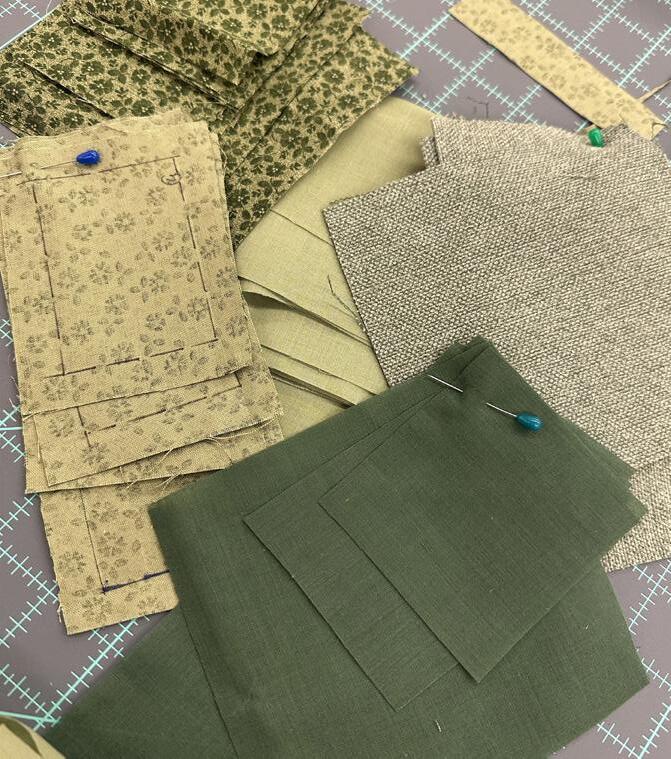
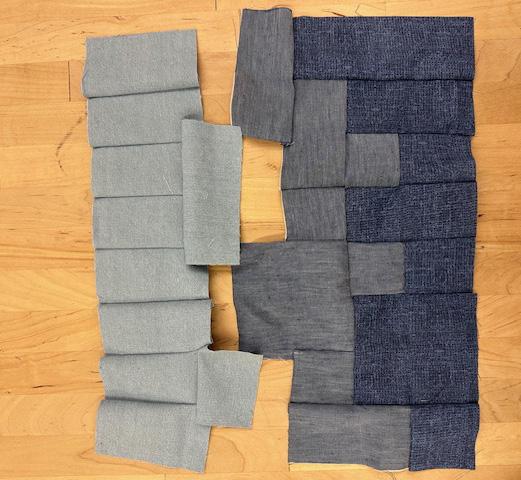
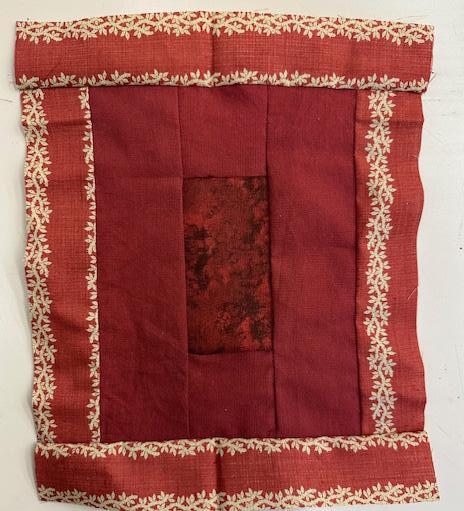

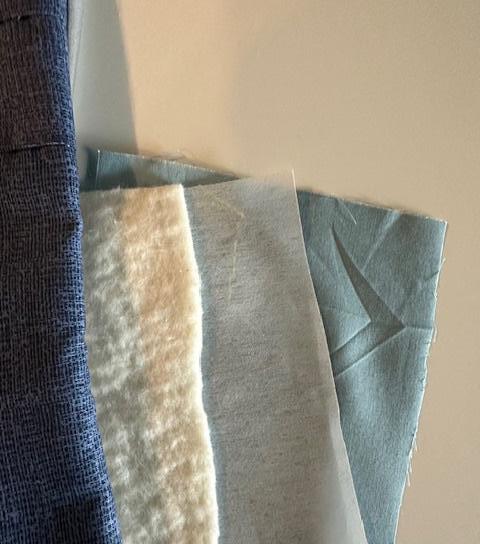
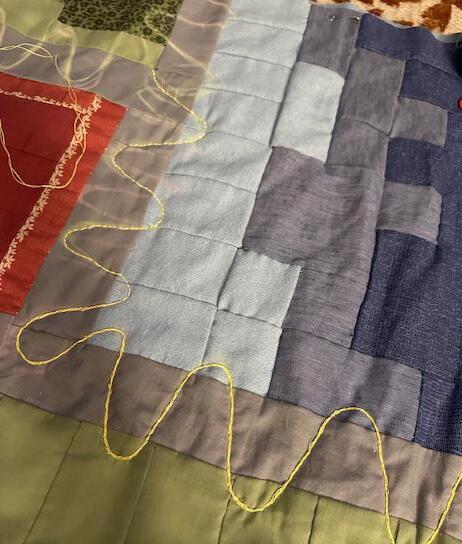 Sewing the Pieces
Fabric Material
The center Piece
Sewing the Pieces
Fabric Material
The center Piece
Stitching the Patches Together
Batthing or Dashing Fine Hand Stitch
FINAL QUILT
Shared suffering through shared effort
Every stitch in a quilt represents hours of dedicated effort, resembling the resilience and strength shown by the victims throughout the experiments and beyond.
Diversity through textures
The use of different materials, colors, and textures in the quilt honors all the different victims ensuring that their sufferings are not forgotten
Act of comfort
A quilt by its mere existence provides warmth and comfort, similarly, a quilt created in the memory of the victims serves as a gesture of comfort and healing for the impacted families and communities.
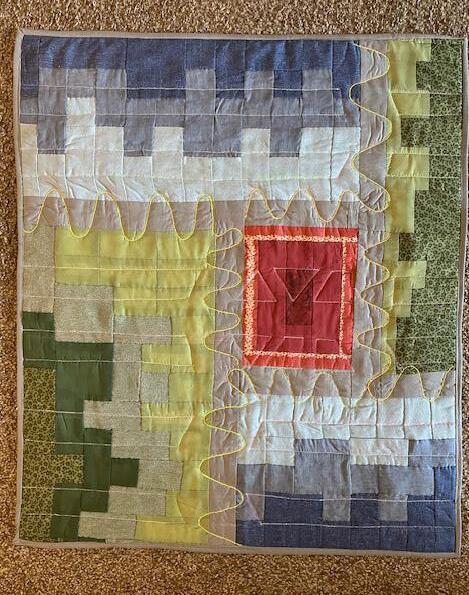
DESIGN INTENT
The Earthy color palette resembles nature, and the design will aim at designing a healing space as an integral part of nature. The site is located near the UC medical campus; the space is used not only by the students and medical professional but several visitors everyday. The aim of the study will be to focus on the understanding the impact of landscape and nature on healing and health through available precedents.
As a designer I am Site driven, and Program drive and focus on the Existing site elements and the architectural language as an inspiration to pin down the starting point of my design
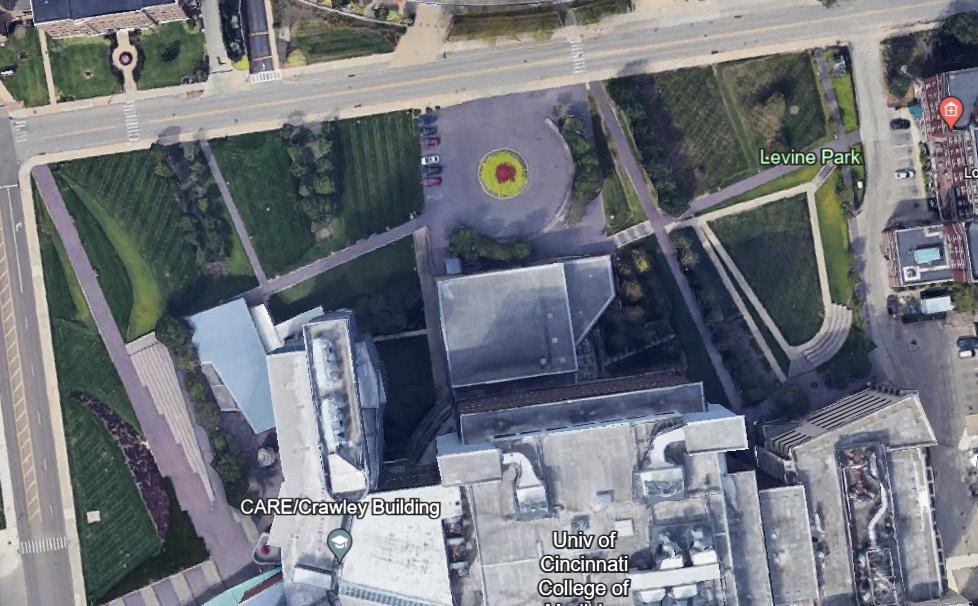
The Site

MODULE 2- LETTER OF INTENT
LAND 7010- SPRING2024
PROF. BARRY KEW
PROCESS

Abstract Goals Inspiration Case Study Site Program Concept Schematic Drawing Conclusion CONTENT

STORY https://www.nytimes.com/1994/04/12/us/researchers-are-accused-of-forgeries.html
Beyond practicality and aesthetics, design holds the power to touch deeper emotions, forge connections, and even influence our understanding of history. In this light, the design of memorials takes on a profound significance, becoming a critical tool for shaping collective memory. Memorials transcend mere structures. A designer’s approach to memorials becomes an act of storytelling. Each element, from the choice of materials to the spatial arrangement, carries the weight of narrative. Symbolic forms, inscriptions, and artistic elements work together to weave a tapestry of memory, inviting visitors to engage with the story. Understanding the diverse perspectives and emotions associated with the event being commemorated is crucial. Engaging with the community, incorporating their voices, and ensuring the design resonates with their cultural context are essential steps in creating truly meaningful spaces.
ABSTRACT
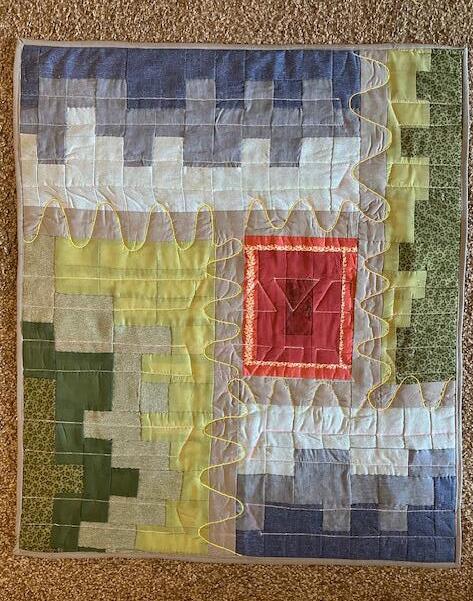
QUILT Quilt-30” X 36”
WOVEN REMEMBRANCE
Designing a quilt as an expression of empathy allows the designer to connect with the story and spend time with the quilt sharing the experience of each other, every quilt narrates different stories and emotions.
The idea of this quilt is:
Shared suffering through shared effort
Every stitch in a quilt represents hours of dedicated effort, resembling the resilience and strength shown by the victims throughout the experiments and beyond.
Diversity through textures
The use of different materials, colors, and textures in the quilt honors all the different victims ensuring that their sufferings are not forgotten
Act of comfort
A quilt by its mere existence provides warmth and comfort, similarly, a quilt created in the memory of the victims serves as a gesture of comfort and healing for the impacted families and communities.
GOALS





inclusive sustainability
Source: https://thenounproject.com/
remembrance healing reflection
Remembering with Reverence:
• Etching an enduring tribute in every name, creating a space of solemn remembrance and respect for the affected individuals.
Cultivating Healing and Hope:
• Crafting a tranquil and contemplative sanctuary, nurturing emotional healing through nature and personal reflection.
• Imbuing the space with symbols of resilience,strength and hope for the future, like the vibrant “Garden of Shared Hope.”
• Offering a platform for community gathering and dialogue, facilitating collective processing of the past and forward movement.
Igniting Knowledge and Reflection:
• Weaving a tapestry of clear and accessible information, illuminating the experiments, their context, and the ethical questions that echo through time.
• Sparking critical thought and open dialogue, prompting conversations about informed consent, research ethics, and their enduring relevance.
• Engaging visitors through interactive elements and multimedia displays, enriching understanding and emotional resonance.
Open Arms and Equal Footsteps:
• Ensuring every space is accessible and welcoming, embracing individuals with diverse needs and abilities.
• Guiding visitors with clear signage and intuitive design, making the path forward effortless.
• Integrating cultural sensitivities and diverse perspectives, ensuring the memorial resonates with all.
A Sustainable Legacy:
• Weaving together materials and methods that respect the environment while minimizing future maintenance needs.
• Remembering the sacrifice of the community and to build a legacy for the living to know that events like this should not happen again.
• Designing spaces that adapt and evolve with time, ensuring the memorial remains relevant and impactful for generations to come.
These goals, interwoven into the very fabric of the memorial, aim to create a space that not only remembers the past but also shapes a brighter future.
INSPIRATION

the
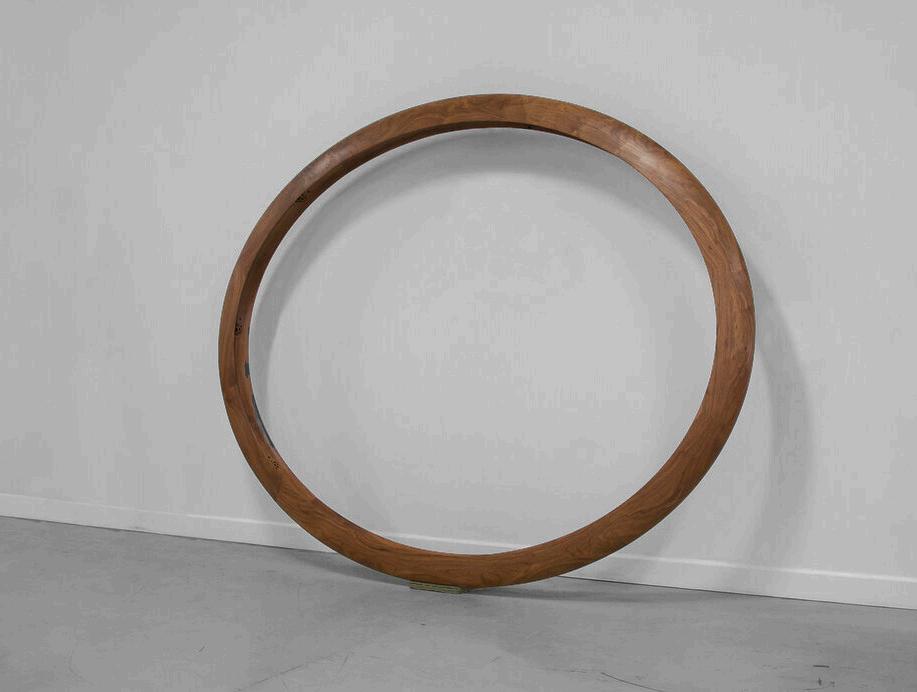
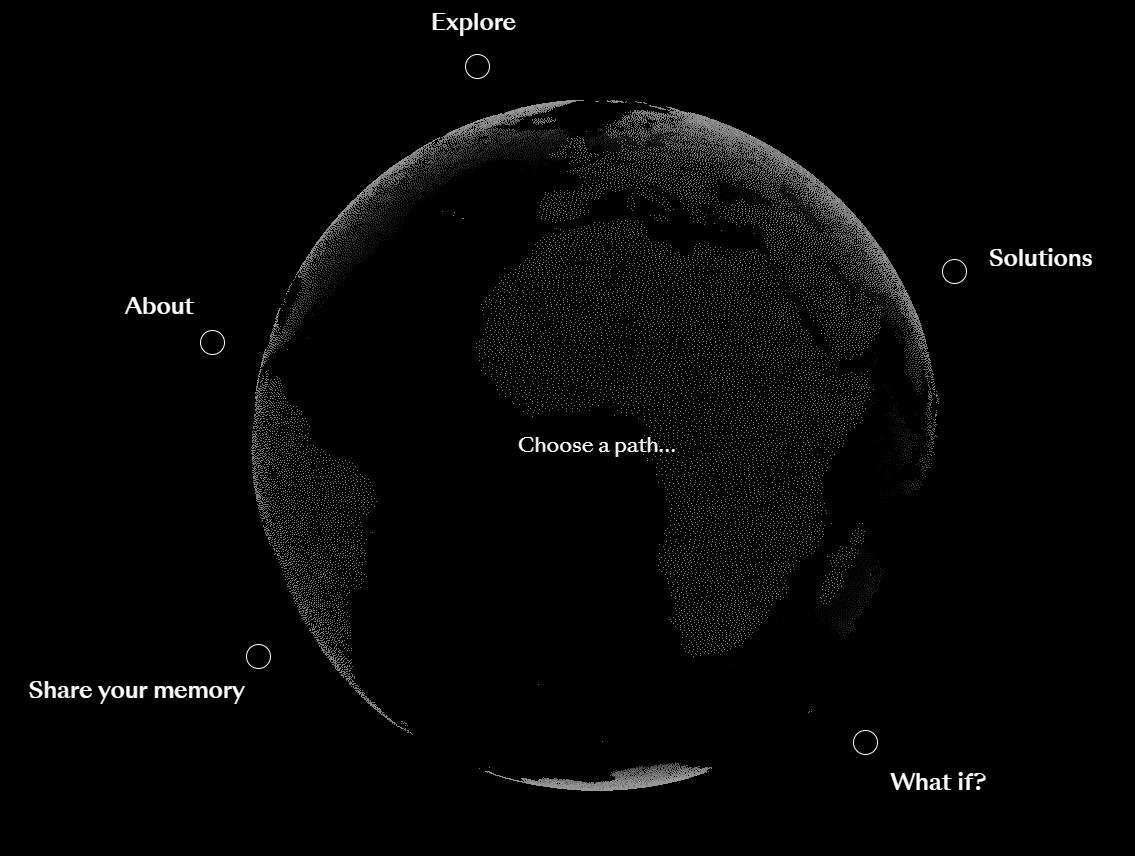
the Website
Source: https://thenounproject.com/ https://www.whatismissing.org/
listening cone, 2009
the sound ring, 2010
WHAT IS MISSING?
Maya Linn- An American designer and sculptor known for the Vietnam Veteran memorial and numerous projects inspired through sculpture and art.
Technology, when used thoughtfully, can become a powerful tool for enriching the sensory experience of memorial design, creating a space that resonates with the sacred and personal nature of individual remembrance.
Immersive Story telling through hearing their stories in their own voices, seeing their faces, and experiencing their surroundings – a powerful way to foster empathy and connection.
Interactive Tributes allows visitors to personalize their experience by adding their own stories, memories, or messages to digital walls or interactive memorials. This creates a sense of shared remembrance and community engagement.
Subtle Integration of technology seamlessly into the design, avoiding overwhelming displays or intrusive sounds.
A similar project is the last memorial in the portfolio of Maya Linn , What is Missing?
The project is about nature and our relationship to it and in hopes of presenting new ways to see a different outcome for us and for our planet.This is a memorial ( making one aware of all that we are loosing) and yet focused on the advocacy (Sharing our duties to help) and interaction(person explores privately yet one shares and explores and contributes a memory of their own through website)
The Listening Cone is a bronze and reclaimed wood sculpture containing an interior screen that features videos selected from a library of more than 75 videos with text linking threatened and endangered species to the habitats and ecosystems that are vital to their survival.
The Sound Ring has hidden embedded speakers playing soundscapes created by the Lab. The sound focuses attention on endangered species and habitats around the world. The artwork gives viewers an intimate and spatial acoustical experience of unique soundscapes.
CASE STUDY
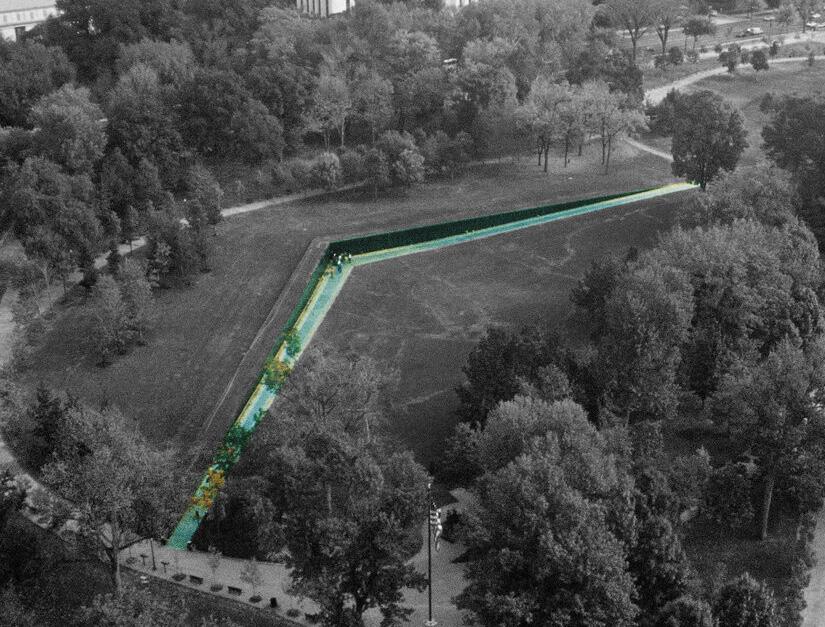
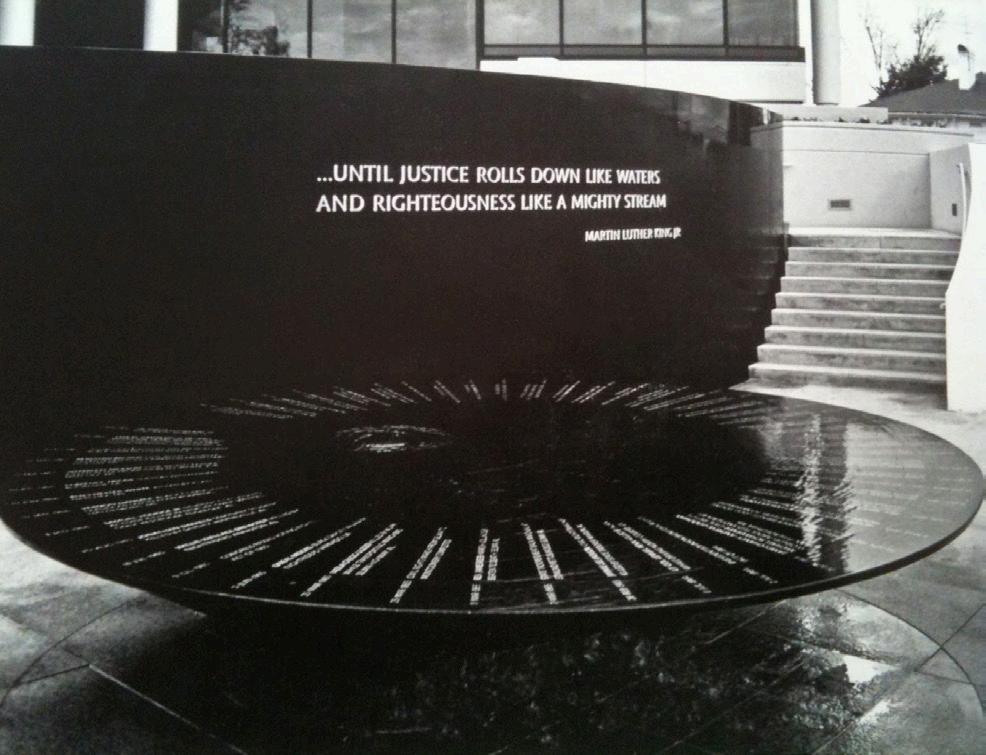

uPlift
Source: https://https://www.mayalinstudio.com/
vietnam veteran memorial
civil rights memorial
THE VIETNAM MEMORIAL, 1982
(National Mall, Washington D.C.)
This memorial was a result of a competition, where Maya Linn participated.
The concept of the design was to cut into the earth and polishing its open sides, like a geode.
Two black granite walls, placed below grade, engraved in chronological order with the names of the men and women who gave their lives in the Vietnam War.
At the apex where the two walls join, the dates 1959 and 1973 (marking the beginning and end of the war) “meet,” thus closing the circle of the time span of the war.
It gives the visitor a place , to meet, remember and honor those who gave so much to the nation.
CIVIL RIGHTS MEMORIAL,1989
(Southern Poverty Law Center, Montgomery, AL)
Martin Luther’s quote from the book of Amos:
“We are not satisfied, and we will not be satisfied until justice rolls down like waters, and righteousness like a mighty stream.”
The small sketch on a napkin evolved into a design of a curved water wall separating the upper and lower plaza and a circular stone water table engraved with a brief history of the civil rights movement. The water table reads a bit like a clock face with the time markers/dates following clockwise on the outermost edge.
As one approach this 14-ton object the base disappears quickly, leaving you with a perception of the pure surface of words— just the writing, just the history.
UPLIFT, 2010
(Ellen S. Clark Hope Plaza Washington University School Of Medicine, St. Louis, Missouri)
The concept of the design was to create the effect of floating, surrounded by a pool of water lilies.
A significant grade change from one side of the pool to the opposite side to create a circular body of water that one could step onto at grade.
As one walks around the pool, the pool transforms into a cantilevered bowl with water lilies floating in it. The plaza is part of the BJC Institute of Health at Washington University School of Medicine, where many of the patients who visit have difficult and hard-to-treat illnesses.
The goal was to create a quiet, peaceful refuge and offer a simple bowl of flowers at the center of the garden. As you walk out on the floating concrete circle you are surrounded by Emily Dickinson’s poem “Hope.”
Source: https://www.nps.gov/media/video/ view.htm?id=F7122BC7-1DD8-B71C07CC0CDC91E91CFA
Source: https://www.mayalinstudio.com/memoryworks/civil-rights-memorial
Source: https://www.mayalinstudio.com/architecture/ uplift
The highlighted blue nodes identifies the key locations of pedestrian and vehicular pathway. Identifying this location will help in spatial planning of the design to have elements of maximum importance to be placed close to
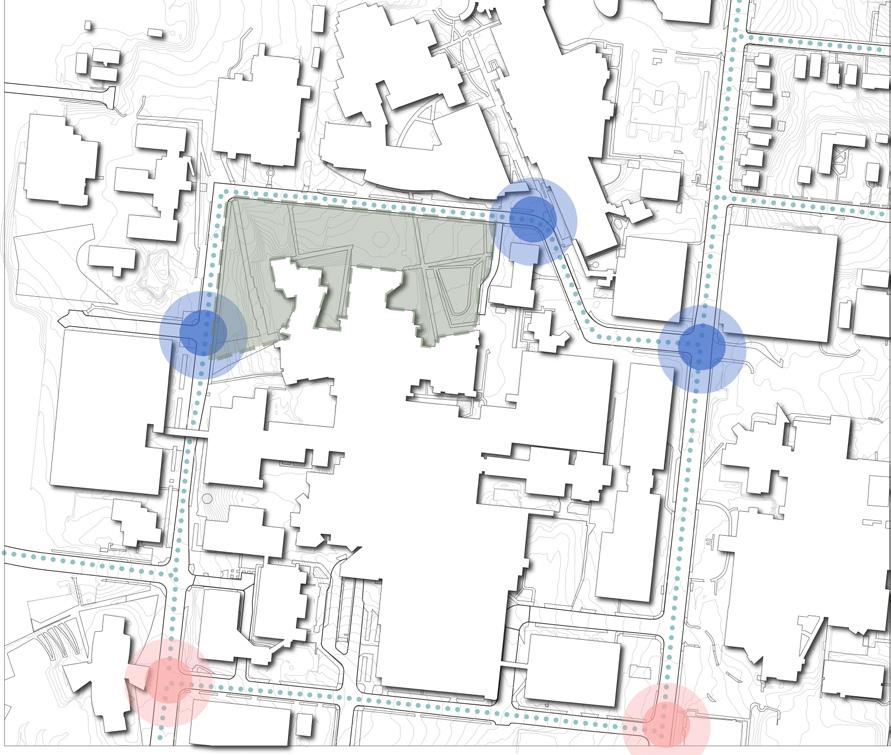
Pedestrian traffic
As the site is encapsulated between three tall buildings, it becomes crucial to consider the visibility of site for spatial anlysis and planning. The Pink and the blue are two major location on the site as per visibility analysis.
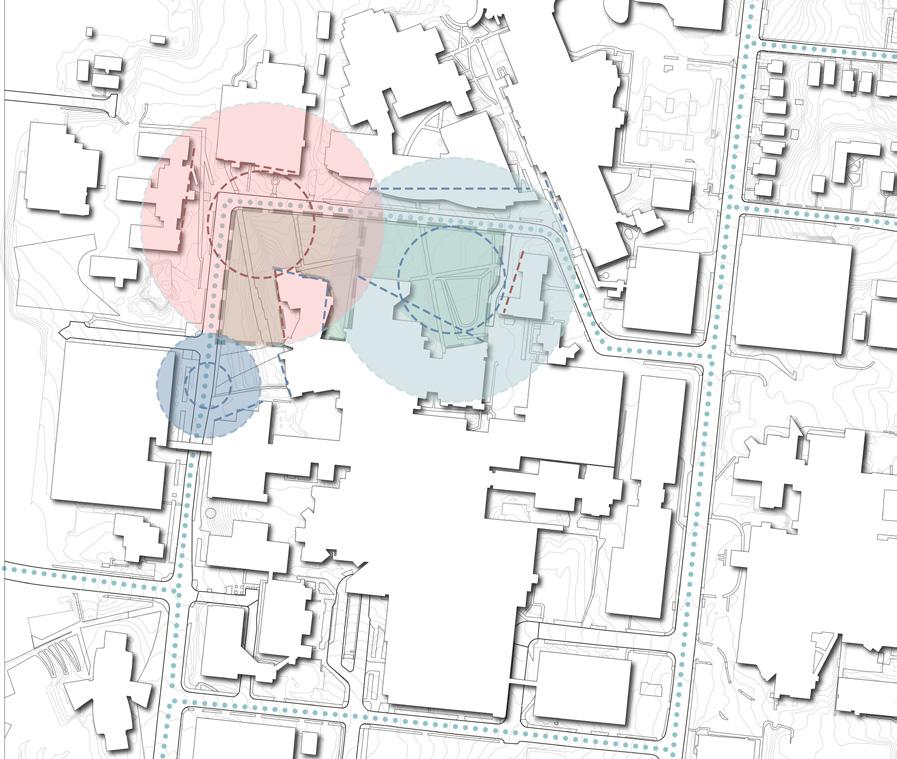
As the design intends to explore the earthscape, it is important to study the contours and the vegetation on site. The size of the color represents the grading elevation with the larger circle resembling the steep slope.
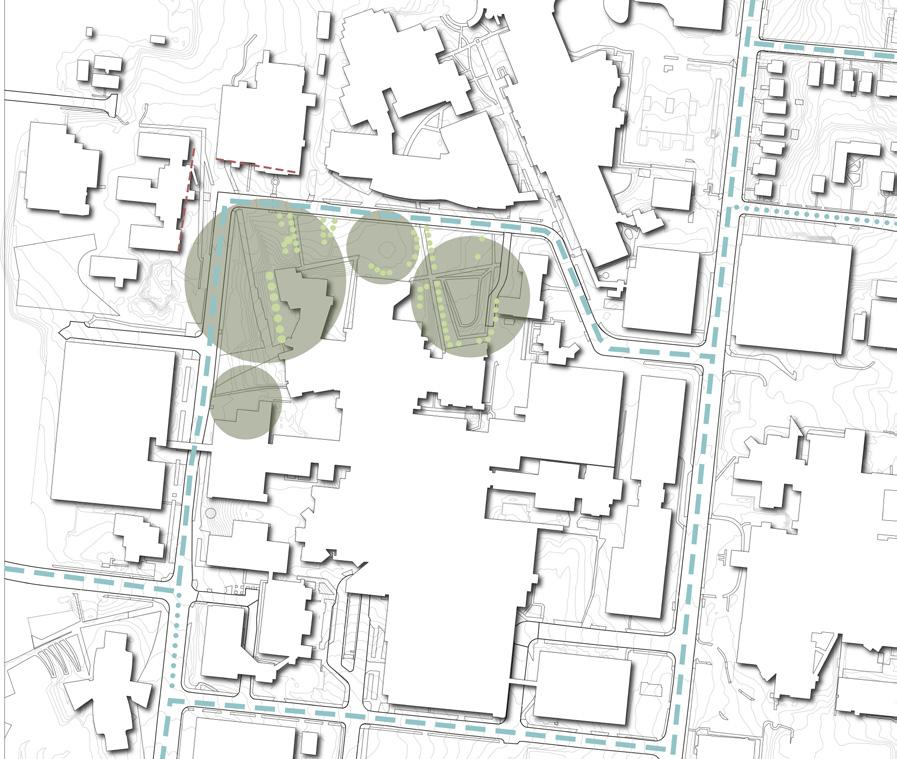
eXisting vegetation & contour study
SITE
visibility analysis
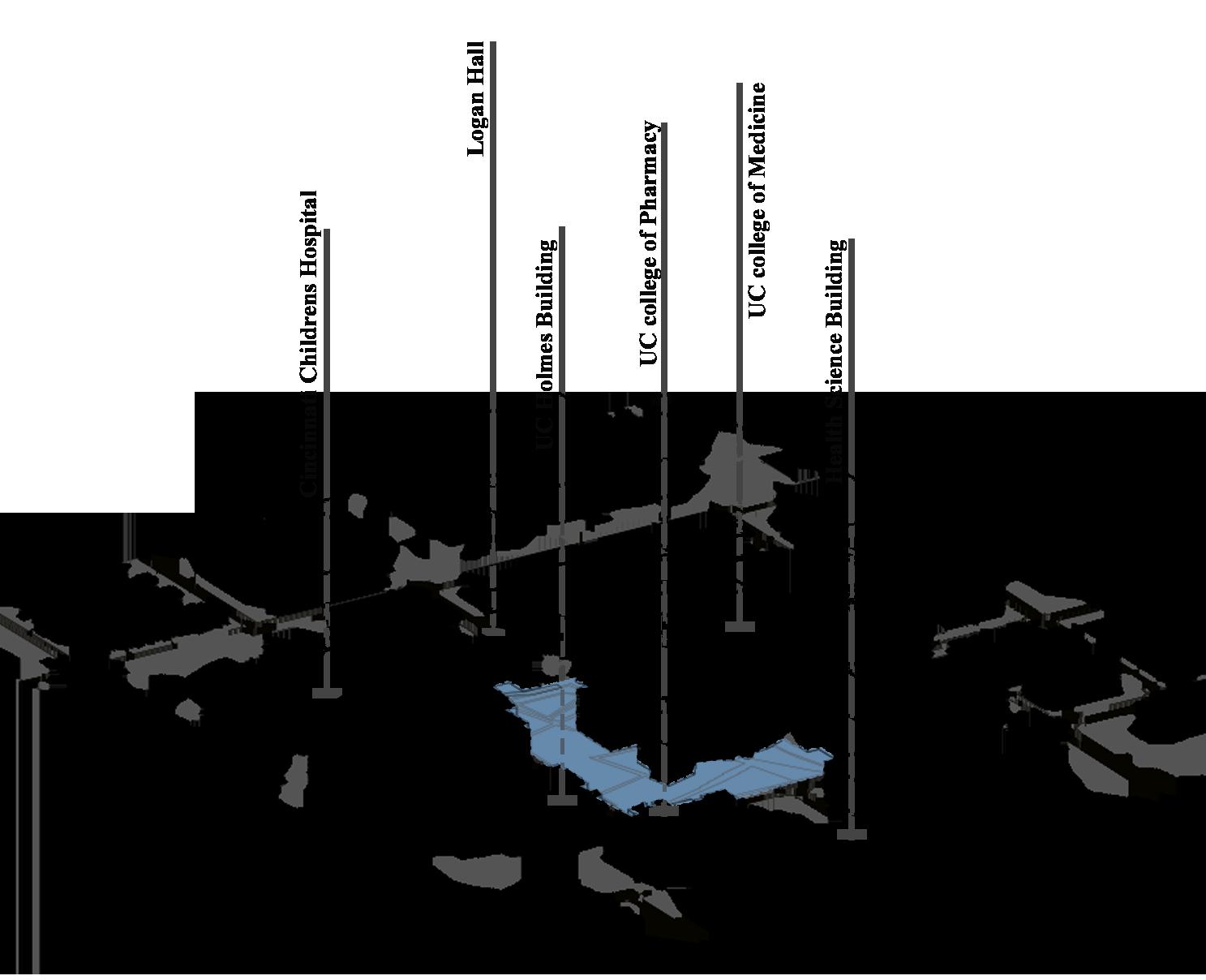
The site for a memorial is not merely a blank canvas, but a storyteller on its right. . The site, which is situated at the heart of the University of Cincinnati’s Medical Campus taps into the existing context, envisioning a dynamic dialogue with the surrounding environment.
The University of Cincinnati Medical Center, despite its current esteemed reputation, harbors a complex history shadowed by the tragedy of the Cincinnati Radiation Experiments. Notably, there remains a conspicuous absence of remembrance for the victims or acknowledgment of the unethical practices employed within its walls. Placing a memorial at the UC Medical Center will create a confrontation with the past, raising awareness among patients, staff, and visitors about a dark chapter in medical history. This could spark important conversations about informed consent, ethics in research, and the importance of accountability. When the memorial is juxtaposed with the medical center it is important to be aware of the possible challenges of evoking pain and distress to the close ones of the victims and the current patients. Striking the right balance between remembrance and respect is crucial.
The site is a enclosed space with the Cincinnati children’s hospital, UC student health and Medical College overlooking the site inviting a diverse spectrum of users onto the site.
SITE
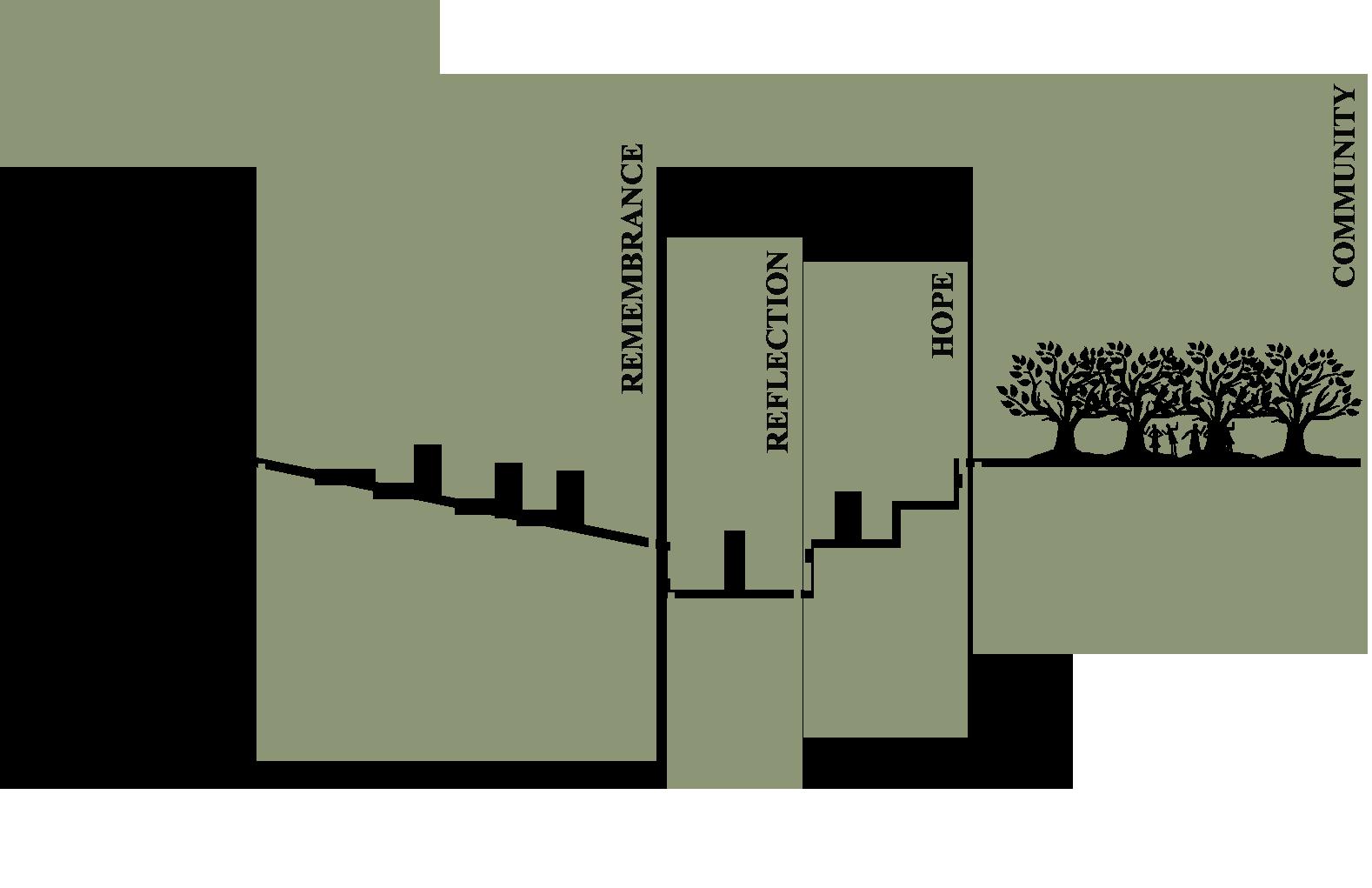
Undulating earthworks etched with textures whisper stories, while soundscapes weave a tapestry of memory. This interplay of form and sound evokes emotions long buried, prompting reflection and remembrance. The design will incorporate elements that symbolize resilience, hope, and strength, such as gardens, trees, or natural light-filled spaces.
Stepping into the memorial, visitors embark on a narrative journey.
A solemn grove inscribed with names honors the affected, while a serene sanctuary invites quiet reflection.
A rising path symbolizes resilience, leading to a vibrant community garden teeming with hope.
Garden of Shared Hope Bathed in sunlight, this vibrant space symbolizes the community’s resilience and a brighter future. Lush greenery and diverse plant life inspire optimism and renewal, while the open layout facilitates community events, fostering dialogue and collective healing.
THE SPATIAL PROGRAMMING PROGRAM
From Schematic Sketch to SenSory Sanctuary
The conceptual design is an exploration of form, shapes, volume, scale, edge, and proportion.
Beginning from finding the pivotal point of the site to drawing the first line of the design, the composition unfolds weaving the entire space into an immersive tapestry of experiential space. Every element – from the ground beneath your feet to the sounds that fill the air – is meticulously crafted to evoke a range of emotions and memories. The design process later move towards developing a schematic drawing – a rough blueprint outlining the memorial’s key spaces and their relationships. This initial sketch then blossoms into scaled drawings, meticulously detailing each area with precise dimensions and proportions. But the journey doesn’t stop there. The preliminary design process delves deeper, zooming in on each individual space to refine and detail it at a human level. This is where the magic happens – where the focus shifts from lines on paper to crafting a user experience that resonates with visitors on a visceral level.
Imagine the Memorial Grove, initially just a shaded area on a plan. Now, we envision the texture of the bark beneath fingertips, the dappled sunlight filtering through leaves, and the gentle murmur of water nearby. This meticulous attention to detail ensures that every element, from the choice of materials to the soundscape, contributes to an experience that is both meaningful and emotionally impactful.
This human-centered approach is at the heart of designing the memorial. It allows us to move beyond simple aesthetics and delve into the emotional needs and expectations of visitors.
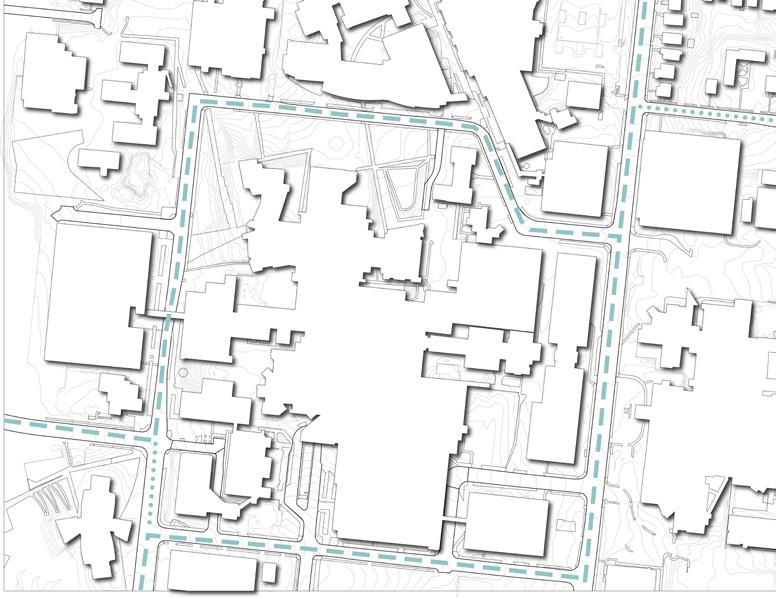
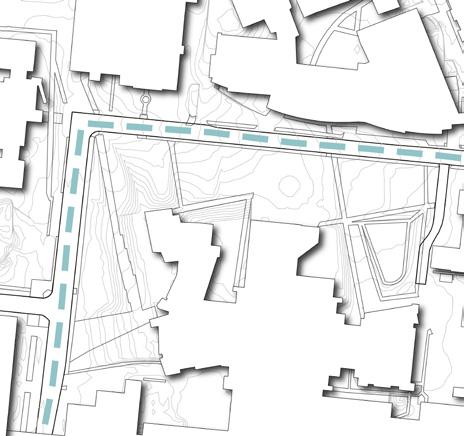
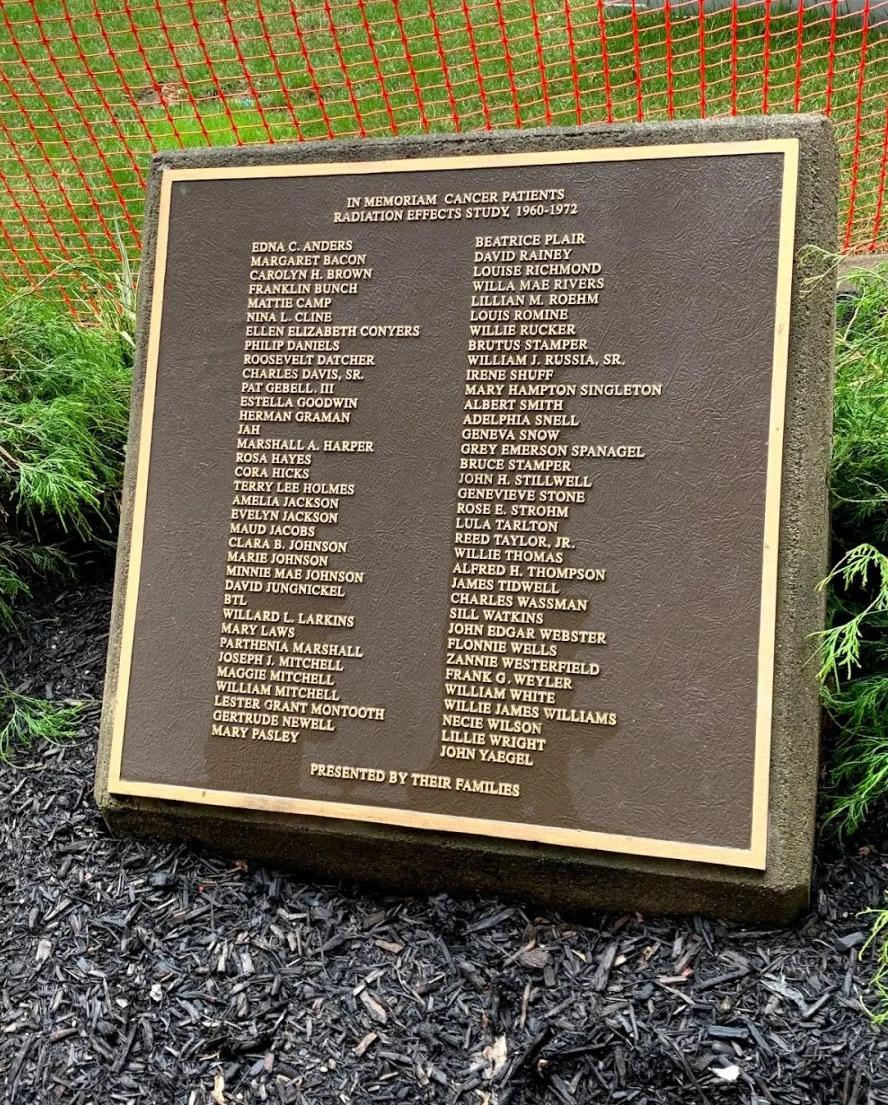
CONCLUSION
the Final DeSigna Space For remembrance
The final design embodies the collective narrative woven throughout the process. By crafting spaces that are not just visually appealing but also emotionally resonant, we can create a lasting tribute to the past while offering a space for reflection, healing, and hope for the future.
By weaving together remembrance, reflection, and hope, this spatial program strives to create a meaningful and impactful memorial that honors the victims, educates the public, and inspires positive action. This memorial, born from empathy and rooted in human connection, becomes more than just a physical space. It serves as a testament to the victims, a catalyst for healing, and a beacon of hope for a future where ethical responsibility prevails in medical research. It is a living memorial, evolving alongside the community and continuously reminding us of the past while guiding us towards a better future.
APPENDIX
• “ the LISTENING CONE | CALIFORNIA ACADEMY of SCIENCES.” MAYA LIN STUDIO, www.mayalinstudio.com/memory-works/the-listening-cone.“
• UPLIFT.” MAYA LIN STUDIO, www.mayalinstudio.com/architecture/uplift.
• “CIVIL RIGHTS MEMORIAL.” MAYA LIN STUDIO, www.mayalinstudio.com/memoryworks/civil-rights-memorial.
• “Design Icon - Free PNG & SVG 6420195 - Noun Project.” The Noun Project, thenounproject. com/icon/design-6420195/. Accessed 22 Feb. 2024.Lin, Maya.
• “VIETNAM VETERANS MEMORIAL.” MAYA LIN STUDIO, www.mayalinstudio.com/ memory-works/vietnam-veterans-memorial.Schneider, Keith.
• “Researchers Are Accused of Forgeries.” The New York Times, 12 Apr. 1994, www.nytimes. com/1994/04/12/us/researchers-are-accused-of-forgeries.html.
REFERENCE





















 Sewing the Pieces
Fabric Material
The center Piece
Sewing the Pieces
Fabric Material
The center Piece
























